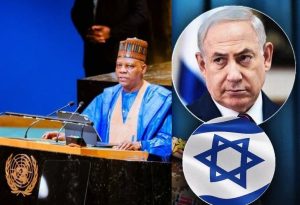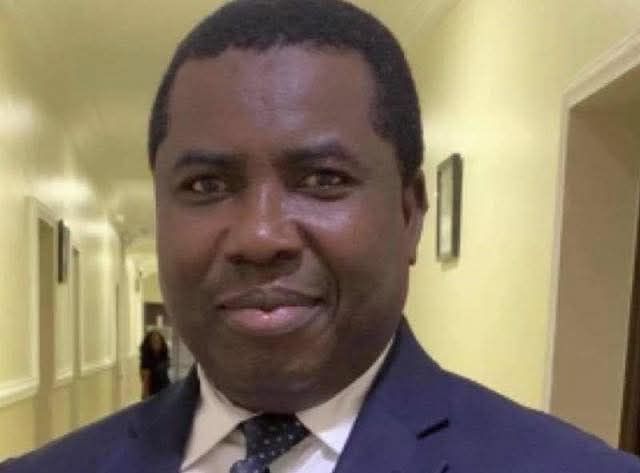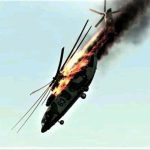
The U.S. and Its Allies in the War on Terror: A Critical Assessment of Military and Intelligence Operations Post-9/1.
By: Okotete Happiness
Introduction
On September 11, 2001, the World Trade Centre was attacked by the Al-Qaeda network, an Islamic militant terrorist organization. The attack claimed the lives of people from 84 different countries in the world, including the United States of America. In New York City, about 2,750 people were killed, 184 at the Pentagon in Washington, and 40 in the state of Pennsylvania. More than 400 firefighters and law enforcement officers were also killed (Bergen, 2023). After the terrorist attack, former United States President George W. Bush, embarked on an extensive terrorism prevention initiative in response to these crimes against humanity. Nations around the globe came together to form an unprecedented alliance against terrorist activity worldwide. The administration of President George W. Bush took the lead by enhancing American homeland security along with establishing a global coalition with the objectives of eliminating the Taliban from authority in Afghanistan, halting al-Qaeda’s activities in Afghanistan, disrupting al-Qaeda’s operations in Iraq, ousting the Taliban from power in Afghanistan, destroying al-Qaeda’s international training grounds, and supporting the innocent Afghan people in their rehabilitation from the Taliban’s control.
The “War on Terror” refers to the global campaign launched by the American government and its allies in the wake of the September 11, 2001 terrorist attacks to eliminate terrorist organizations and stop any further attacks.
The September 11 plot demonstrated Al-Qaeda’s global reach, with meetings for planning in Malaysia, agents acquiring aviation skills in the United States of America, a collaboration by decision makers based in Hamburg, Germany, the transfer of funds via the United Arab Emirates, and the recruitment of suicide agents from territories all over the Middle East. All of these acts were ultimately supervised by al-Qaeda’s Afghan leaders (Bergen, 2023). The United States of America adopted military tactics to drive out the Taliban in Afghanistan, which had in the past functioned as a place of refuge for the terrorist organization responsible for the attacks of September 11, 2001. Drone attacks, along with other targeted assassinations, have been used to eliminate high-value targets in several countries, including the nation of Pakistan, and Somalia, among others.
READ: World War III: Living Nostradamus, Athos Salomé Makes Shocking Predictions
Al-Qaeda terrorists were charged with committing crimes against the human race, especially against Afghan women and children. The wife of the president of the United States of America drew awareness to the terrorist government’s injustices towards women and children during her campaign. This helped facilitate the inclusion of women in the new interim administration. Women were of great importance in society before the Taliban. Al-Qaeda’s presence in Afghanistan stripped them of their fundamental liberties by restricting girls over the age of eight from attending schools, closing the women’s university, forbidding women from being employed, restricting their freedom of movement and access to healthcare, enforcing a rigid dress code, etc. These actions tore apart their families, endangered their lives, and reduced them to disadvantaged people. Al Qaeda and the Taliban rule also targeted civilians by outwardly using them as human shields for their warfare operations, and obstructing foreign humanitarian organizations’ efforts to provide essential needed nourishment and healthcare to the Afghan people. Taliban leaders have also commandeered organizations that provide relief in order to carry out military activities. These acts contributed to the famine of the Afghan people.
As part of his multifaceted terrorist campaign to undermine western society, Osama bin Laden and his organization were able to fund many of their terrorist activities through drug trades. (The Global War on Terrorism: The First 100 Days, n.d.)
The Taliban purchases weapons and other military equipment, pays for the training of terrorists, and supports the activities of extremists in nearby nations and abroad using the money raised from the production and trade of opium and heroin (U.N. Committee of Experts report on Resolution, 2001), The Taliban and al Qaeda’s involvement in the drug trade has also drawn criticism from the United Nations.
The war against terrorism
The war on terror was fought on many fronts, including military operations, intelligence, law enforcement, and diplomacy. The war pulled together efforts to disrupt terrorist financing networks, enhance intelligence sharing, and bolster border security measures in addition to military action.
Military operations
The war against terrorism was the first conflict of the 21st Century which led to the deployment of the 21st-century military strategy. The United States government worked with its campaign allies and the U.S. military to craft a cutting-edge military strategy with the aim of minimizing civilian losses, collaborating with local military personnel, and destroying the dictatorial Taliban who supported the al-Qaeda terrorist network.
The U.S. military was able to successfully lead the worldwide alliance in battle thanks to its swift adaptation to a hostile, distant, and constantly-evolving battlefield. U.S. troops defeated the Afghan insurgents by combining 21st-century technology with 19th-century tactics, as stated by the New York Secretary of Defence Donald Rumsfeld (The Global War on Terrorism: The First 100 Days). Drone attacks, along with other targeted assassinations were launched to eliminate high-value targets in several countries, including the nation of Pakistan, and Somalia, among others. The destruction of Al-Qaeda’s leadership in Afghanistan occurred in the weeks following the start of the war on terror by military forces deployed from many other nations, including the United Kingdom, Australia, Canada, France, Germany, Italy, Japan, among others. Taliban leader’s surrendered control of numerous significant cities to the resistance, senior al-Qaeda and Taliban figures were either captured or killed, and the military destroyed 39 Taliban command and control centres and at least 11 terrorist training sites. US Marines created a base for military operations in Afghanistan, freed the prisoners held captive and restored diplomatic relations between Afghanistan and neighbouring countries.
Diplomacy
With the help of foreign assistance and US leadership, The United States were able to gather evidence against those responsible for the September 11 attacks through intelligence cooperation with many other countries, and we are now better able to thwart future attacks.
The Afghanistan set aside long-standing ethnic and political differences to form a new interim government that relieved women and children from the oppression of the Taliban, electing a president and 29 portfolio ministers.
In order to increase support for the fight against terrorism, the previous president George W. Bush had meetings with the heads of state of at least 51 different nations. Over 46 multilateral declarations of support from organizations have been made, and 136 nations have promised various forms of military assistance. NATO, the OAS, and ANZUS (Australia, New Zealand, and the U.S.) have also swiftly invoked their treaty duties to help the United States. NATO allies have directly assisted in defending American territory, and 142 countries have mandated the freezing of the assets of alleged terrorist groups and individuals. In addition, 89 nations have granted permission for U.S. military aircraft to fly over their territory, 76 nations have granted permission for them to land, and 23 countries have agreed to accommodate US military personnel engaged in war operations. Several allied nations, including the US, have restored embassies in Kabul, Afghanistan.
The President joined more than 120 countries around the world in condemning terrorism and remembering the victims of the September 11 attacks during commemorative ceremonies. Honouring the citizens of all countries whose citizens were killed in the World Trade Centre.
Intelligence operations
The United States government setup three institutions aimed at promoting information sharing between intelligence and law enforcement agencies, and also to motivate other countries to identify, disrupt, and defeat terrorist financing networks. These institutions are; the Foreign Terrorist Asset Tracking Centre (FTAT), Operation Green Quest, and the Terrorist Financing Task Force (United States Department of State, 2021). They established stringent new criteria to prevent terrorists from gaining access to the global banking system. The Foreign Terrorist Tracking Task Force was established with the goal of locating and expelling any existing foreign terrorists as well as preventing their entry into the nation. The assets of more than 153 known terrorists, terrorist organizations, and terrorist financial institutions have now been frozen in the United States’ banking system.
Terrorist financing
Instead of using a weapon like a rifle or a missile, the president’s first counterterrorism action involved using his pen to order the freezing of terrorist finances and the disruption of their ability to raise money in the future. This act put the world’s financial institutions on notice; the U.S. and over 142 countries cut off business relations with anyone who sponsors, supports, or does business with terrorists and frozen their assets. At least 153 known terrorists, terrorist organizations, and terrorist financial centres now have their assets frozen in the American financial system, and the U.S. and its allies have succeeded in achieving their goal of fighting terrorism on the financial front by shutting down operations of major financial networks that the al-Qaeda network used as sources of income and means of money transfer
Law enforcement
The war against terrorism required the enforcement of laws by numerous law enforcement and security agencies in the United States. Law enforcement and intelligence agencies improved information sharing, allowing nationwide e-mail search warrants and payment information subpoenas, and putting those who use internet providers on the same level with the rest of the population. 93 Anti-Terrorism tasks forces were established, one in every U.S. Attorney’s region, to oversee the interactions and activities of local, state, and federal law enforcement agencies.
To meet the new anti-terrorism goal, the Department of Justice reorganized and activated the Nation’s Justice and Law Enforcement Resources. The Immigration and Naturalization Service (INS) was also reorganized by restructuring the agency by distinguishing its service and enforcement activities to improve the nation’s immigration system’s effectiveness and productivity. Additionally, the Department of Justice (DOJ) developed a list of the most sought terrorists and worked with the US Treasury Department to freeze the wealth and account of persons and entities linked to financial networks that support terrorism.
The FBI established a task force to coordinate information sharing and command across the country, and as a result, the INS made 460 arrests. FBI also conducted over 500 searches, thousands of witness interviews, and hundreds of thousands of leads.
The President acted swiftly to protect Muslims from hate crimes, and the Department of Justice followed his lead by convening a meeting with 29 distinguished leaders from the Arab, Muslim, and Sikh communities in America, organizing community forums on how to stop such violence, as well as prosecuting those who violate federal hate crime laws.
Humanitarian relief
President George W. Bush asserted that showing the rest of the world the genuine kindness and strength of the American people, as well as how united we are in the fight against terrorism and our concern for the innocent Afghan citizens, is one of the best and truest weapons the United States has against terrorism. The humanitarian situation in Afghanistan had gotten worse as a result of years of civil war, the Taliban’s rule, and the worst drought in 30 years. Millions of Afghans are at risk of starvation, 70% of them are undernourished, and only 13% have access to clean water (Department of State Washington File: Fact Sheet: Al Qaeda & Taliban: The Making of a Humanitarian Disaster, n.d). Al-Qaeda and the Taliban not only failed to provide security, food, and shelter for the Afghan people, but they also impeded international relief groups’ efforts to transport vitally needed food and medical supplies (The Global War on Terrorism: The First 100 Days). This prompted USAID to announce a five-point assistance strategy for Afghanistan: lower and stabilize food prices; guarantee that aid reaches those for whom it is intended; start developmental relief programs). The international community, led by the United States, overcame severe logistical and security problems by using trucks, boats, aircraft, and hundreds of volunteers to deliver food relief to Afghanistan. These food donations were enough to feed around six million people in a single month. The government provided funds to facilitate relief efforts in Afghanistan, which included housing rehabilitation and development, road and bridge repair, well and irrigation system repair, agriculture, water resource restoration, health care financing, shelter repair, and supplying essential non-food items, the teams also ran training sessions for Afghan and Iraqi government representatives. Additionally, the USA’s Fund for Afghan Children was established, and the organization was able to bring in more than $1.5 million. The September 11th United Way Relief Fund and other philanthropic organizations also provided resources and services to help the victims’ families and the affected communities rebuild their lives. These groups also monitor the needs of the victims’ families and the amount of assistance they are receiving.
The war on terror was launched in various forms to tackle global terrorism through military, financial and humanitarian interventions by killing terrorists and disrupting their organizations, making it impossible for those groups to strike. It also served as a deterrent since terrorist groups realized the futility of conducting attacks against the United States. Even though military operations in Iraq and Afghanistan have ended, the message to aspiring terrorists should have been unmistakable: if you attack the United States, there will be no place to hide; the American military will destroy you and, potentially, overturn your nation’s political regime. Other facets of the War on Terror continue, such as the battle against terrorism financing.
Failure of the war against terror
Despite its victory, the global war on terror failed to achieve some of its objectives, resulting in an intensification of vices that caused more harm than good. The War on Terror failed for two key reasons: overestimation of the threat posed by terrorists to the United States and the use of violent military involvement. The United States of America launched a multinational anti-terrorism effort that included military intervention, nation-building, and initiatives to change Middle Eastern politics. This resulted in an intensive counterterrorism campaign that failed to protect Americans from terrorist assaults, resulting in a destructive and ineffectual American approach. (Thrall & Goepner, 2017).
America’s overestimation of the threat posed by terrorism
The war on terror was given an excessive size, scope, and ambition due to the exaggerated view of the terrorist threat in comparison to its true scale. the terrorist danger to the United States was portrayed as extremely crucial and was exacerbated by political and party leaders who preferred to push the narrative rather than alter the initial threat estimate. (Schneier, 2006; Habeck, 2015). President George W. Bush and his administration set out on a mission to not only destroy al Qaeda but also all other terrorist organizations with a global reach, and then use military intervention to eradicate the underlying conditions that gave rise to them. he believed that terrorism stemmed, in part or entirely, from conditions such as poverty, deprivation, and injustice. this mentality led to a mentality based on the belief that the US was at war with Islam, causing leaders to hold the view that they could influence the politics of other countries believing that the if the Middle East is stable, prosperous, and democratic, their nation will be protected from terrorism. This resulted in the War on Terror being expanded far beyond its necessary bounds, causing new issues while failing to address the old ones, all at a very high cost. Countries where the US carried out air or drone strikes reported a huge spike in terror attacks when compared to countries where the US did not conduct strikes (Thrall & Goepner, 2017). The damage done domestically and globally over the past 20 years by a militaristic response to terrorism is almost incalculable. It has cost U.S. taxpayers over $8 trillion and resulted in the deaths and injuries of tens of thousands of innocent civilians, the majority of whom were Black, Brown, or Muslims. It has also uprooted millions of people, increasing their risk of hunger, illness, and exploitation (Gledhill, 2022).
Flawed intervention strategy
The American commitment was targeted in the wrong direction. Many American officials have wrongly believed that the motivation for al Qaeda and ISIS terrorist attacks against the United States is primarily an anti-American principle that hate the liberties, or a desire to destroy the United States, and have overlooked the fact that political differences and competition for power in the Middle East, as well as the unconventional Islamist disdain of the West, are the main drivers of conflict in the Middle East and between Islamist groups. Osama bin Laden and other jihadist leaders have also clearly stated that the United States is involved in their plans not because they despise its freedoms or because they seek to destroy the Western way of life, but because American foreign policy obstructs their path to power in the Middle East (Byman & Williams, 2016).
The military actions of the united states were also criticized by the Friends Committee on National Legislation (FCNL) stating that eliminating armed terrorist organizations cannot be accomplished through the use of force. Evidence demonstrating a fivefold increase in annual terror attacks globally supports this (Jayes,2022).
The United States succeeded in defeating a few thousand people but failed to fully defeat the al-Qaeda network or make an impact in alleviating the underlying conditions that have been suggested to give rise to terrorism. Instead, more Americans have died as a result of terror attacks, and there have been more Islamist-inspired attacks within the United States since 9/11, while the number of Islamist-inspired terror groups has grown since the War on Terror began (McCants, 2015). This suggests that the war on terror has failed to fully understand the scope and conditions that drive terrorism,
Despite enormous counterterrorism operations in the Middle East and Northern Africa, history has clearly demonstrated that the War on Terror has not made Americans significantly safer (or feel safer) than they were before 9/11, despite the fact that thousands of terrorist group members have been killed, and offensive counterterrorism measures have had little to no correlation with the rate of terrorism in the U.S. homeland. According to McCants (2015), the most likely scenario is that foreign interference has rendered Americans marginally less safe. The US has also not been able to exterminate terrorists or dissolve their organizations rather According to a 2006 National Intelligence Estimate, the American intervention and occupation of Iraq has enabled a fresh wave of Islamic terrorist (Mazzetti, 2006; United States Department of State, 2021).In Burkina Faso, Mali, and Niger, at least 1,000 attacks, massacres, and other violent occurrences occurred in 2020; this is a seventy percent increase from 2017, when each of the three nations joined a combined forces created by the US to combat terrorism (Thrall & Goepner, 2017).
In conclusion, critics of the war on terror acknowledges that terrorism is a significantly smaller threat than US officials have generally acknowledged, and that they can’t wipe out all terrorist organizations, eradicate the conditions that give rise to terrorism, or prevent small groups from finding places to hide. They have also recognised that Homeland Security cannot ensure total safety because tackling terrorism and politics are regional duties. They have since withdrawn their army from Afghanistan, Iraq, Syria, and other countries, and also terminating the drone operation but have indicated that In order to combat “any emerging terrorist challenge coming from Afghanistan, air and drone operations would remain a viable option (Friends Committee on National Legislation, n.d.) They have also pulled back their unsuccessful efforts to deny refuge to terrorist organizations. As a result, administrators must reconsider and adjust the goals of American counterterrorism strategy. The United States’ counterterrorism approach shouldn’t frequently involve military action since doing so has only bred unrest and animosity. They have stopped using force and accepted a more modest goal of managing the terror risk by relying on security measures taken by law enforcement and intelligence agencies. The Task Force on Extremism in Fragile governments, which was founded in 2017, has created a fresh strategy to enable fragile governments to fend off extremism by themselves (Task Force on Extremism in Fragile States, n.d.). This strategy combines the critical and political diplomatic reasoning of elite former politicians, policymakers, and other specialists instead of promoting democracy and nation-building in the Middle East.
References
Bergen, P. L. (2023, March 17). September 11 attacks. Encyclopaedia Britannica.
Byman, D. L., & Williams, J. R. (2016, July 28). ISIS vs. Al Qaeda: Jihadism’s global civil war. Brookings.
Country Reports on Terrorism 2018 – United States Department of State. (2021, May 10). United States Department of State. https://www.state.gov/reports/country-reports-on-terrorism-2018/
Department of State Washington File: Fact Sheet: Al Qaeda & Taliban: The Making of a Humanitarian Disaster. (n.d)
Gledhill, J. (2022). The Failures of the War On Terror | Friends Committee On National Legislation. Friends Committee on National Legislation. Retrieved April 21, 2023, from
Habeck, M. (2015). A Global Strategy for Combating Al Qaeda and the Islamic State.
Jackson, R. (2023, March 22). War on terrorism | Summary & Facts. Encyclopedia Britannica.
Jennifer Walkup Jayes (2022). Beyond the War Paradigm. Costs of War. Watson Institute for International and Public Affairs.
Mazzetti, M. (2006). Spy Agencies Say Iraq War Worsens Terrorism Threat. The New York Times
McCants, W. (2015). The ISIS apocalypse: the history, strategy, and doomsday vision of the Islamic State. In St Martin’s Press eBooks. St Martin’s Press.
Preventing Extremism in Fragile States: A New Approach. (n.d.). United States Institute of Peace.
Schneier, B. (2006). Beyond Fear: Thinking Sensibly About Security in an Uncertain World. Springer Science & Business Media.
Task Force on Extremism in Fragile States. (n.d.). United States Institute of Peace.
The Global War on Terrorism: The First 100 Days. (n.d.).
Thrall, A. T., & Goepner, E. (2017). Step Back: Lessons for U.S. Foreign Policy from the Failed War on Terror.
U.S. Budgetary Costs of Post-9/11 Wars Through FY2022: $8 Trillion | Figures | Costs of War. (n.d.). The Costs of War.
In an effort to gather intelligence and prevent future attacks, the US has also implemented a number of unpopular policies, such as enhanced interrogation techniques and the operation of secret prisons.
The U.S. and Its Allies in the War on Terror: A Critical Assessment of Military and Intelligence Operations Post-9/11






















